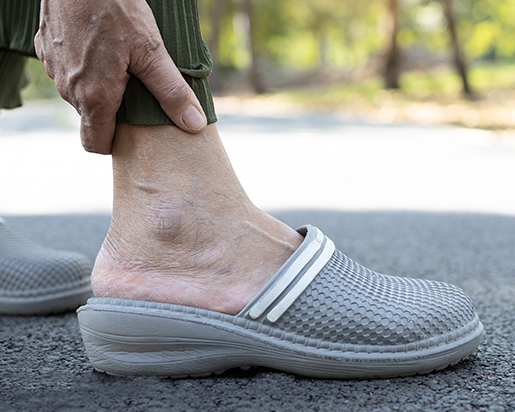
Children with strong, healthy feet avoid many kinds of lower extremity problems later in life. That's why it is important to inspect your children's feet periodically.
Infants
The size and shape of your baby's feet change quickly during their first year. Because a baby's feet are flexible, too much pressure or strain can affect the shape of their feet. It's important to allow baby to kick and stretch their feet freely. Also, make sure shoes and socks do not squeeze the toes.
Toddlers
Do not to force a toddler to walk before s/he is ready. Once walking begins, watch the toddler's gait. Many toddlers have a pigeon-toe gait, which is normal. Some initially learn to walk landing on their toes instead of their heels. Most children outgrow both these problems. But other conditions detected early can be treated more easily.
When Foot Care Is Needed
To help with flatfeet, special shoes or orthotics may be prescribed. To correct mild in-toeing or out-toeing, your toddler may need to sit in a different position while playing or watching TV. If your child's feet turn in or out a lot, corrective shoes, splints, or night braces may be prescribed.
The foot's bone structure is well-formed by the time your child reaches age 7 or 8, but if a growth plate (the area where bone growth begins) is injured, the damaged plate may cause the bone to grow oddly. With a doctor's care, however, the risk of future bone problems is reduced.
Remember to check your child's shoe size often. Make sure there is space between the toes and the end of the shoe and that the shoes are roomy enough to allow the toes to move freely. Don't let your child wear hand-me-downs shoes.
